What You Need to Know About Teahouse Trekking on the Everest Base Camp Route with Sherpa Expedition
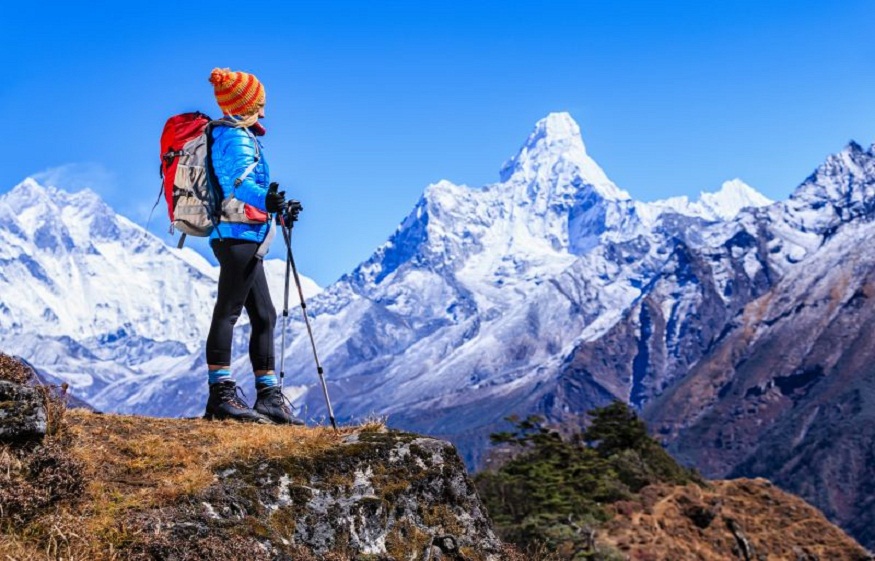
Sherpa Expedition on Teahouse trekking on the Everest Base Camp Treks route in Nepal provides trekkers with a great experience in the center of the Himalayas. Teahouses are small, family-run lodges situated along the trekking route where trekkers can rest, eat, and spend the night. These small farms turned teahouses form an integral part of the trekking experience, providing a glimpse into local life and a taste of local culture.
One of the immediate differences with the Sherpa Expedition on Everest Base Camp trek is the company’s informed choice of teahouses to ensure that while being comfortable, you’re not sacrificing the authentic trekking experience. These teahouses have a distinctive, simple yet warm setup and provide trekkers a place to unwind after a day of challenging hiking. The rooms are often bare bones, with a bed and blankets and sometimes a shared bathroom, but they are the refuge needed on the trek.
One of the major advantages of teahouse trekking with Sherpa Expedition is tasting local Sherpa cuisine that is freshly cooked in each teahouse. Trekkers are treated to meals like dal bhat (lentil soup with rice) and momo (dumplings), which can sustain trekkers with authentic flavors of the region while refueling energy levels for the next day’s trek. Sherpa guides tell stories of Sherpa culture and traditions during the trek, adding depth to the experience.
With Sherpa Expedition, you will not have to worry about anything like room booking to meal management when it comes to teahouse trekking. Their experienced team takes care of everything and recommends the trekkers the physical part of the trek so that they don’t have to worry about where they will sleep or eat. Thus, Sherpa Expedition not only provides an effortless and unforgettable trek but also nurtures a close bond with the Everest region’s communities.
Introduction To Teahouse Trekking
The teahouse trek is one of the most popular and comfortable ways to experience the Everest Base Camp trek and other high-altitude treks in Nepal. Unlike camping treks, in which trekkers bring along all their own equipment and camp each day, teahouse trekking is a more convenient and immersive experience, staying in family-operated guesthouses known as “teahouses.” These teahouses are spread over the trekking routes to provide trekkers a room for snacks, food, and overnight. Teahouse trekking started as a way to accommodate the ever-increasing number of trekkers visiting the Everest region while offering employment to local communities. The teahouses are basic but warm, often family-run establishments with bunks and simple meals that provide a place to interact with fellow trekkers. They provide trekkers with the cultural interaction they enjoy and represent a more leisurely trek. By staying in teahouses, trekkers don’t need to worry about carrying tents, cooking supplies, or finding campsites — all of that is provided for you on the way. With a teahouse trek, you will spend all your energies on the adventure to get to Everest Base Camp, the breathtaking landscapes and cultural aspects you will encounter, rather than worrying about organizing logistics every single day.
How a Teahouse Works And What It Is
Mount Everest Base Camp Trek A teahouse is a basic, locally-owned guesthouse situated along well-travelled trekking routes in Nepal, like the Everest Base Camp trek. It provides the essential comforts such as a bed, food, and shelter to restore yourself after a long, weary day of trekking. For trekkers who do not wish to camp, teahouses provide a heavy-free safe rest stop. Teepees are placed, in most cases, in villages and small settlement areas along the trail to enable trekkers to stay and prepare for the day after. The teahouse system operates on a basic wish and will fund if you wish to stay overnight, book a room, and eat in a communal dining room. Teahouses tend to be basic architecturally, with rudimentary bedding and shared restroom facilities, but they provide just the right amount of comfort for trekkers to regain their strength. Most teahouses also offer charging for electronic devices and have spaces for trekkers to hang out, share stories, and connect with other adventurers. They are not luxurious but provide a warm and welcoming environment, perfect for trekkers looking to experience the culture and sense of community in the Himalayas without too much stress.
Teahouse Stay Along the Everest Base Camp Route
Teahouse accommodation along the Everest Base Camp route is an essential aspect of making the journey more accessible and enjoyable for trekkers. Along the route, the teahouses are generally located in the most crucial places to rest; so from the lively village of Lukla to the quiet Gorak Shep, staying in teahouses is your best choice. The teahouses offer basic amenities with only a bed, blanket, and maybe a pillow, but that’s all you need after a long day of trekking! In some more remote areas, the rooms may be fairly basic and shared bathrooms may be the norm, but if so, they tend to be functional and comfortable. Many teahouses are made of wood or stone, and provide stunning views of the surrounding mountains and valleys. Some teahouses are more developed with larger rooms and greater privacy; some are smaller, with shared rooms that encourage interaction among trekkers. The owners of teahouses tend to be welcoming and eager to share local knowledge and culture. In addition, staying in teahouses along the Everest Base Camp route allows trekkers to join the local Sherpa people, learn about their customs, and experience a community atmosphere. While the teahouse trek offers basic accommodations, it also provides an authentic and intimate experience in the Himalayas.
Meals and Dining in Teahouses
One of the best parts of enjoying the local teahouses along the Everest Base Camp route is sharing meals all together in the communal dining areas. Teahouse food consists mainly of simple, hearty dishes that make sure the trekkers get the nutrition they need. The menu usually offers a mix of Nepali, Sherpa, and global dishes, including dal bhat (lentil soup with rice), momos (dumplings), soups, noodle dishes, and fried rice. Many teahouses also serve breakfast items such as porridge, eggs, toast, and pancakes. As well, teahouses make sure their meals are both filling and nutritious, as sitting at 14,000 feet (4.400 meters) means it’s Important for a trekker to eat well to keep the energy up. Although food may be less of a mix than on city or urban roads, meals are meant to give enough calories for clients to keep going every day. They usually serve tea and coffee, as well as herbal drinks, such as ginger tea, which can be very comforting for trekkers suffering from the cold or fatigue. While not all teahouses offer as much variety as city restaurants, the meals they do serve are nutritious and intended to keep trekkers hydrated and nourished. Teahouses also provide little social culture as trekkers are able to meet other trekkers while eating, swapping stories, and laughing over communal meals.
Teahouses: Comfort and Amenities
Everest Base Camp Teahouses are basic but offer the comforts and necessities that allow hikers to rest and recover after long days on the Everest Base Camp route. The lodges are generally simple but adequate for trekkers who are heading to the mountains for a comfortable and hassle-free stay. Teahouses typically offer a very basic sleeping arrangement, a mattress, blankets, sometimes a pillow, but the warmth and simplicity of the rooms are a welcome retreat after a trek day. (Services can vary, but many teahouses provide charging for devices such as phones and cameras, where trekkers can keep in touch and take photos of their trip.) Some of the more established teahouses might even have Wi-Fi, although the signal is patchy at best due to their remote location. Bathrooms are typically shared, and hot showers may be available for an additional fee, although this will depend on the teahouse’s location and resources. In more remote areas, some teahouses may offer heated rooms or stoves to help keep guests warm at night. Though you aren’t going to get luxury digs in the teahouses, the vibe is friendly and relaxed, with a comfy and secure environment for you to chill and meet fellow trekkers. Teahouse Experience: The teahouse experience is all about the warmth of the basics, the ability to connect with a number of fellow dignitaries as you relax and ethe njoyment of the beauty of the Himalayas all behind the comfort and amenities needed for resting and recharging.
The Importance of Teahouse Trekking Sherpas
Teahouse guides (Sherpas) are needed on the Everest Base Camp route. Sherpa guides are essential in teahouse trekking and on the Everest Base Camp route. These guides are not just navigators — they serve as cultural ambassadors, altitude experts, and an essential support network along the way. A big part of their job is to help trekkers acclimate to the altitude, which is important in avoiding altitude sickness. One of the reasons that Sherpas are so suited to lead expeditions in high altitudes is that they’re trained to recognize the symptoms of altitude sickness and will modify the trek so that the health and safety of the group is always prioritized.
But in addition to just ensuring your safety, Sherpa guides add something special to the teahouse trekking experience by sharing knowledge related to the local Sherpa traditions, history, and customs. Trekkers need not worry about negotiating prices with teahouse owners, as guides and porters negotiate for trekkers, helping to overcome language barriers for services, entertainment to food, and accommodations, etc. Sherpa guides are also highly experienced at gauging the pace of the adventure based on the individual trekker’s physical condition, and will build in plenty of time for rest and acclimatization.
In teahouse trekking, much of the logistical load is carried by Sherpas as well. They book rooms in teahouses, so that trekkers have a place to sleep every night. Their knowledge of the region’s weather, terrain, and local customs makes sure that trekkers have a smooth and memorable experience. Sherpa guides are more than just guides—they are the lifeblood of a successful Everest Base Camp trek!
How to Plan and Book Teahouses Visit
Booking your Everest Base Camp trek teahouses can seem intimidating, but with Sherpa Expedition, the entire process is streamlined and simple. This means that on most teahouse treks, you have to book accommodation yourself at every stop on the way (which isn’t always of great quality or available). Sherpa Expedition manages all teahouse bookings on behalf of trekkers to guarantee that rooms are reserved ahead of time at trusted teahouses, allowing trekkers to concentrate on enjoying the hike instead of having to concern themselves with finding lodging.
Himalayan Base Camp Trek. Your guide manages the reservation process, collaborating with local teahouse owners to book your lodgings according to the group’s itinerary. This method ensures room readiness at the time of arrival and minimizes the chance of arriving at fully booked teahouses— a frequent occurrence during peak trekking seasons.
What’s more, advance booking can relieve the pressure of figuring out where to spend each night. Even though they are basic compared to Western standards, Sherpa Expedition guarantees that all lodgings are safe, well-kept, and comfortable. Teahouses usually feature shared rooms with beds and blankets, and although private bath facilities may not necessarily be provided, trekkers will always be guaranteed a clean, hospitable atmosphere.
Sherpa Expedition tackles the booking process so trekkers can enjoy a seamless and prompt trekking experience without challenges with looking for where to sleep at night. This way, trekkers can keep their focus on enjoying the scenic adventure while the details are handled by professionals.
Why The Teahouse Trekking is the Best for Your Everest Adventure
One of the challenges of the Everest Base Camp trek is accommodation. So now here comes teahouse trekking. Instead of camping or luxury trekking, teahouse trekking puts trekkers into local, family-run lodges along the way to Everest Base Camp. This style of trekking enriches the experience in many ways to provide a taste of the local Sherpa culture, traditional meals, and the hospitality of mountain communities.
Trekking in teahouses: Trekkers can enjoy more of the locations they walk through, learning more about the lives of the people who inhabit the Everest area’s high-altitude terrain. The owners not only serve tea and food but also tell stories and share about their culture in the teahouse, which is a good representative of local Sherpa culture. You are exposed to more of the local culture, and that makes your connection to the region and the people that much more meaningful than if you were to stay in more commercialized lodgings.
Teahouse trekking also has a much more social, communal vibe. At each teahouse, trekkers from all over the world regroup, eating meals, resting, and swapping stories. This feeling of solidarity transforms the trek into something more as trekkers intermingle thanks to the communal experience of traversing the Himalayas. Teahouses also offer simple comforts, like warm food and drinks that help recharge trekkers and make it through the arduous climb.
Overall, teahouse trekking with Sherpa Expedition can offer trekkers a unique way to experience the Everest Base Camp trek, one that is not just about the physical challenge of the trek—it’s a journey that will allow trekkers the chance to connect with the people, culture, and traditions that make up the region.
Cultural Insights from Hosts of Teahouses
Perhaps the most enriching part of teahouse trekking on the Everest Base Camp path is the opportunity to learn about Sherpa culture directly from the teahouse hosts. These hosts, local Sherpas and/or their families, provide insight into the traditions, customs, and daily life in the Himalayas to trekkers. By staying in teahouses, trekkers have a chance to interact with the culture of the people in the region directly, far more personally than visiting as a tourist.
Everest Base Camp Trek Cost Sherpas take pride in their heritage and enjoy reciting tales describing their spiritual ties to the mountains, which play a prominent role in Sherpa culture due to their sacredness. Most teahouse hosts are happy to explain the significance of the Buddhist prayer flags, stupas, a nd monasteries that adorn the trekking route. The conversations give trekkers insight into the Sherpa way of life and the deep respect the community has for the mountains.
In addition, many teahouse hosts offer trekkers a chance to sample authentic Sherpa food. Staples of the region include dal bhat (lentil soup with rice), momos (dumplings,) and tsampa (roasted barley flour), which the hosts are often eager to teach trekkers how to play a part in preparing and eating. These interactions enable trekkers to not only savor local cuisine but also deepen their understanding of the region’s agricultural methods and dietary customs.
Teahouse owners share personal stories and cultural aspects that enhance each part of the trekking experience.
Teahouse Trekking Experience: Tips for Comfort
Yes, this is why teahouse trekking becomes comfortable if trekkers prepare for specific conditions and culture. If you are considering trekking to Everest Base Camp, here are some tips that can help you ensure a smooth and pleasant experience:
First, pack light. Since teahouses offer facilities, such as meals and bathrooms, trekkers only need to pack the bare necessities: a good quality sleeping bag, toiletries, and a change of clothes. It was also recommended that we bring our own headlamp for nighttime use, as not all teahouses will have electricity. If required, Sherpa Expedition helps with the equipment rental so that trekkers are equipped with everything they need.
Second, expect basic accommodations. Teahouse rooms tend to be basic, with shared bathrooms and some heat. Be sure to pack warm clothes, including layers, as temperatures can plummet at night even at the lower altitudes. A light, cold-weather sleeping bag will help keep you well-rested.
Third, lean into the communal vibe. Teahouses are social centers where trekkers from around the world socialize. Socialize with fellow travelers and swap tales with them. And remember to respect local ways—pay attention to cultural practices, and always ask before photographing people.
Finally, cash is always needed for purchases. Though a few teahouses will accept credit cards, it’s best to bring enough local currency to pay for meals and other services. With these few simple tips, trekkers will have a comfortable and enjoyable teahouse trekking experience on the way to Everest Base Camp.
Are there tea houses at Everest Base Camp?
Trek to Base Camp Mount Everest itself is just a temporary campsite for climbing Mount Everest, and there aren’t any teahouses at the camp. Despite this, teahouses can be found dotted throughout the Everest Base Camp trekking route, so trekkers will find lodging, food, and refreshments for the journey up the mountain. The teahouses are the main accommodation along the trek, providing trekkers a place to sleep, eat, and socialize safely.
As trekkers ascend, they spend nights at teahouses in the villages of Lukla, Namche Bazaar, Phakding, Tengboche, and Pheriche, among others. These teahouses provide simple accommodations, including beds, blankets, shared bathrooms, and local meals to sustain trekkers for the day ahead. As trekkers ascend to higher altitudes and the environment becomes more remote, teahouses become unpretentious, and they are still key to providing shelter and sustenance to travelers.
Trekking to Everest Base Camp is so unique because of the teahouse experience, which allows trekkers to not only chew the fat with the local Sherpas but also learn about the culture and experience the hospitality of this region. There is no teahouse at the Base Camp itself, but teahouses are an important part of the trek, and they are an amenity that ensures trekkers have what they need to achieve their goal and enjoy the views along the way.
Do you need a Sherpa to climb Everest Base Camp?
Hiring a Sherpa to trek to Everest Base Camp is not a requirement, but we highly recommend that you do, especially if you are unfamiliar with the terrain and high-altitude trekking environment. They are more than a part of the crew; they are also an important part of the whole trekking experience, and their help and guidance are invaluable to making sure your trek is safe and enjoyable.
Sherpas are extremely familiar with the Everest area — the problems presented by the terrain, climate, and the possibility of altitude sickness. Their aptitude for altitude acclimatization is key to enabling trekkers to get accustomed to the thin air and higher altitudes. They can also guide proper pacing, help manage gear, and provide insight into local culture and traditions, which can enrich the trek.
A Sherpa guide also ensures that trekkers are prepared for the unexpected, like overcoming difficult terrain or Bad weather. They are trained in first aid and can identify symptoms of altitude sickness and advise on what to do if there are health concerns. Sherpas are also plugged into local communities, often taking care of teahouse bookings and other logistics, freeing trekkers of responsibility.
For an especially immersive experience of the Himalayas, a Sherpa guide makes the Everest Base Camp trek safer as well as more culturally enriching, a key component of the experience.
How do you prepare for the Everest Base Camp trek?
How to prepare for the Everest Base Camp trek. Proper preparation is key to making sure you are able to acclimatize to such a high-altitude environment and the physical exertion of choosing 1000s of miles of press hikes.
Physical fitness: Physical fitness is the first factor. You should start your fitness regime at least 3-6 months prior to your trek. Concentrate on cardiovascular training, strength building, and stamina. Carrying a loaded pack will help you acclimate to the physical strain that comes with gear. And train your hiking on inclines since this will gain a lot of elevation.
From the perspective of logistical arrangements, ensure that you have the correct equipment for the trek. You pack essentials: warm clothes, comfortable hiking boots, a good sleeping bag, and trekking poles. Familiarizing yourself with the necessary permits for the trek will also help, and making sure you have all your travel documents in order should also be a priority.
Another important piece of preparation is acclimatization. To limit the likelihood of altitude sickness, you have to take it slowly, letting your body acclimate in bits. Check with your trekking company about acclimatization schedules.
Finally, the mental approach is key. This trek will challenge your determination, so prepare for long days of walking, mood-swinging weather, and physical fatigue. If you prepare physically and mentally for the Everest Base Camp trek, you will have an incredible time!
How fit do you need to be to hike to Everest Base Camp?
Everest Base Camp trek physical demands . Trekking to Everest Base Camp is physically demanding, but it doesn’t take extreme athleticism or specialized training to prepare. It includes a long trek of about 130 kilometers (80 miles) and reaching an altitude of 5,364 m (17,598 ft). Although it is not a climber’s route per se, its distance, approximate vertical gain, and terrain inherently make it a physical trial.
To train properly, you should train to be able to last. Aerobic conditioning from cardiovascular work like running, cycling, and swimming will also improve your fitness for longer, more sustained efforts, and strength training, especially lower-body work like squats, lunges, and step-ups, will be the foundation for you to climb and descend steep pitches.
Another excellent preparation option is to hike regularly with a loaded backpack, which mimics the weight you will be carrying while you trek. Equally as important is practicing on uneven ground — the trail to Everest Base Camp is rocky and rugged.
As long as you are an active person and can walk for several hours on hard terrain, you will be fit enough for the trek. However, it’s important to take your time on the trek so you don’t get fatigued or face altitude-related problems. Being at least fit from the ground up will absorb the strain and allow you to enjoy the ET experience without having to go overboard.
Can a beginner climb Everest Base Camp?
Yes, a novice can indeed undertake the trek to Everest Base Camp as long as one is in good physical shape and ready for the trials of the trek. It is not technically challenging, but the trek to Base Camp is long days of walking at extreme altitudes, so you need to be mentally and physically prepared.
Preparation is the key to success for beginners. Get on a good training plan that has a lot of emphasis on endurance, strength, and stamina. Gaining cardiovascular fitness and hiking on varied ground will prepare you for the challenges that the Everest Base Camp trek will present.
A further aspect beginners should consider is acclimatization. Because the trek ascends to rapidly increasing altitudes, your body needs time to acclimate. Days of acclimatization in the scheme of the route (not far from 2-3 days of walking) are essential for a successful journey to the summit and minimizing the risk of mountain sickness.
To navigate the region safely and enjoyably, it is highly advisable to trek with an experienced guide or professional Sherpa, who will provide vital support by ensuring that you maintain a sustainable pace, manage your energy levels effectively, and stay safe in the challenging high-altitude environment.
While the trek to Everest Base Camp can be challenging, it is definitely achievable for beginners with proper training, pacing, and support.
Is the Everest Base Camp hike difficult?
The Everest Base Camp trek is known to be a moderate to tough trek, mainly because of the high altitude, considerable distance, and demanding terrain. Though it does not require technical climbing, trekkers should be ready for the physical exertion and acclimatization challenges.
Everest Base Camp Treks The trek is around 12 to 14 days at about 130 kilometers (80 miles). The route includes steep ascents and descents, and elevation gain can be challenging as you get near Everest Base Camp itself, which sits at 5,364 meters (17,598 feet). The elevation is so high that there is less oxygen in the air, and with the altitude gain, each step becomes more difficult to climb. The trek is, however, planned with a number of rest days that allow you to acclimatise to the height of the altitude, lowering the chance of altitude sickness.
The route is also challenging, with rocky paths, narrow bridges, and stretches that can be muddy or slippery, and call for careful foot placement. Highs for a wide range of only a few degrees would lead to a more predictable weather scenario, something not yet in evidence.
The trek is also physically demanding but is manageable for most people of average fitness. The key to a successful trek is preparation, pacing, and acclimatization. But with a positive state of mind, assistance from guides and Sherpas, and adequate planning, the Everest Base Camp trek transforms into a fulfilling adventure with beautiful vistas and fulfillment.

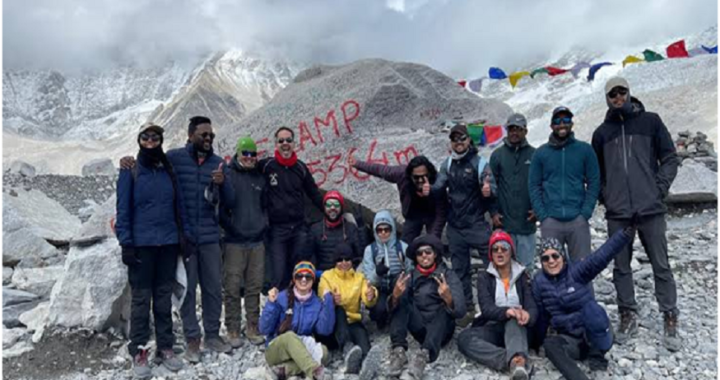 Unforgettable treks Begin at Everest EBC Trek, Island Peak Climbing, Cho La Pass Trek
Unforgettable treks Begin at Everest EBC Trek, Island Peak Climbing, Cho La Pass Trek 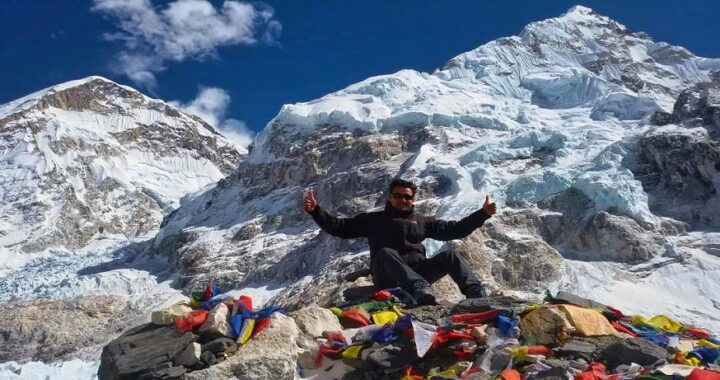 How to get to Lukla for EBC trek
How to get to Lukla for EBC trek 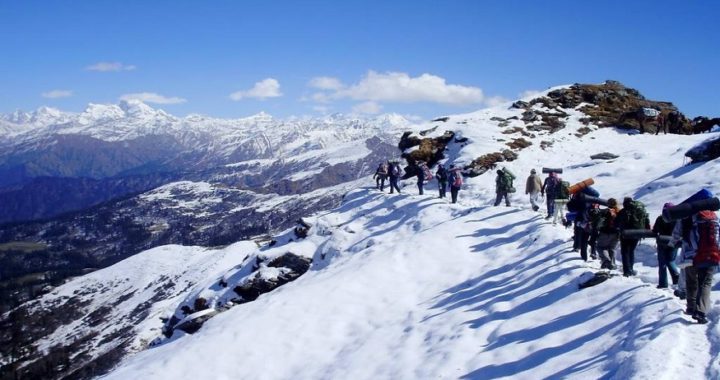 Enjoy the Ultimate Experience of Trekking on Frosty Ice-cubes with Chadar Trek
Enjoy the Ultimate Experience of Trekking on Frosty Ice-cubes with Chadar Trek  The Art of the Grand Host: Entertaining on an Unrivaled Scale Aboard a Turkish Superyacht
The Art of the Grand Host: Entertaining on an Unrivaled Scale Aboard a Turkish Superyacht 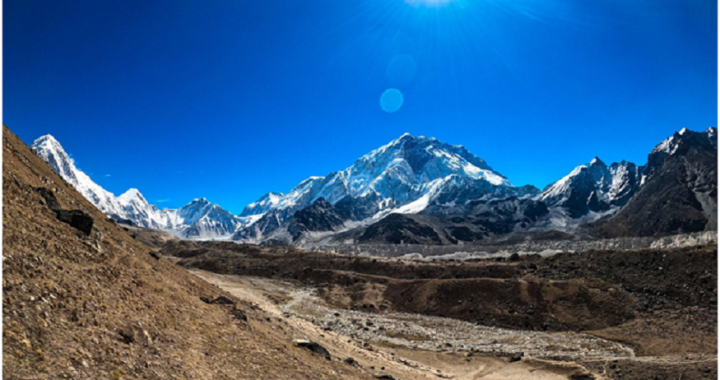 Epic Journeys to Everest: Discover the Region’s Four Iconic Treks
Epic Journeys to Everest: Discover the Region’s Four Iconic Treks 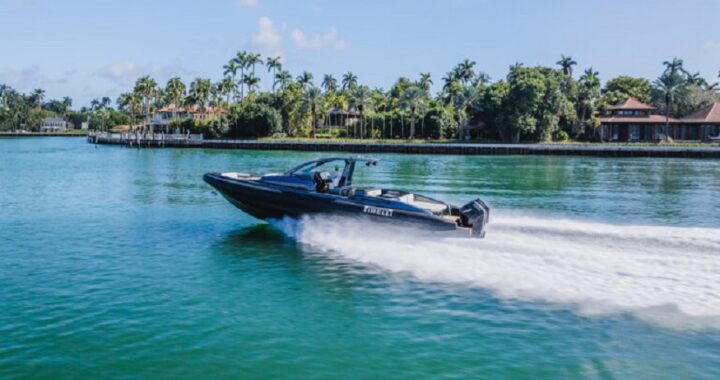 Ibiza Yacht Retreat: Rejuvenate Your Mind, Body, and Soul
Ibiza Yacht Retreat: Rejuvenate Your Mind, Body, and Soul